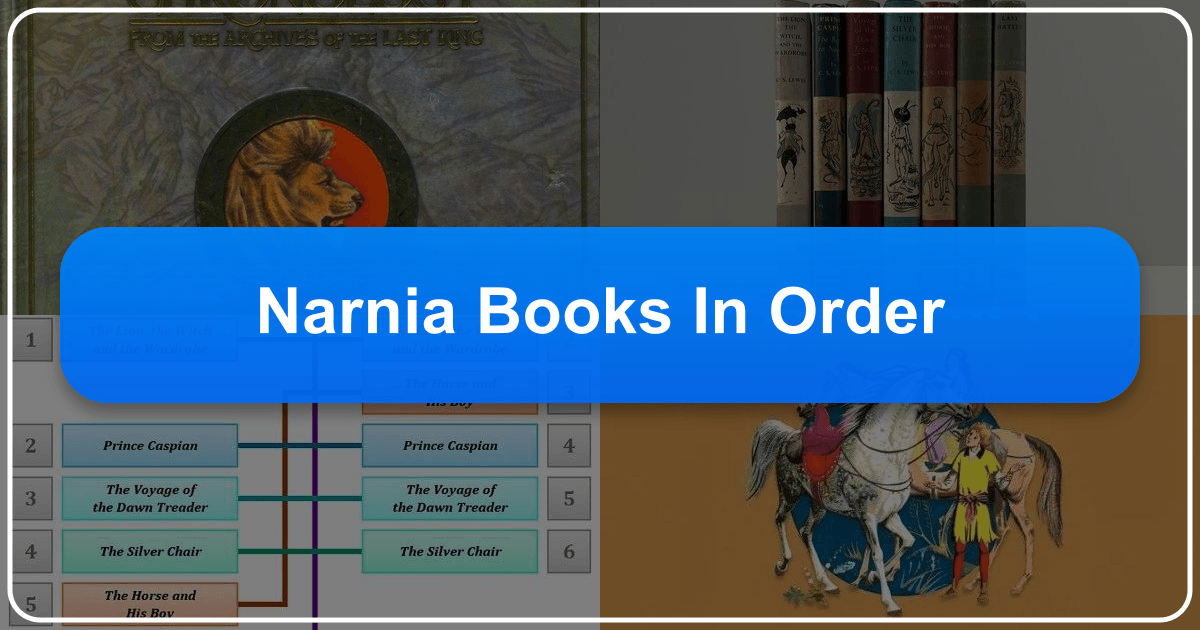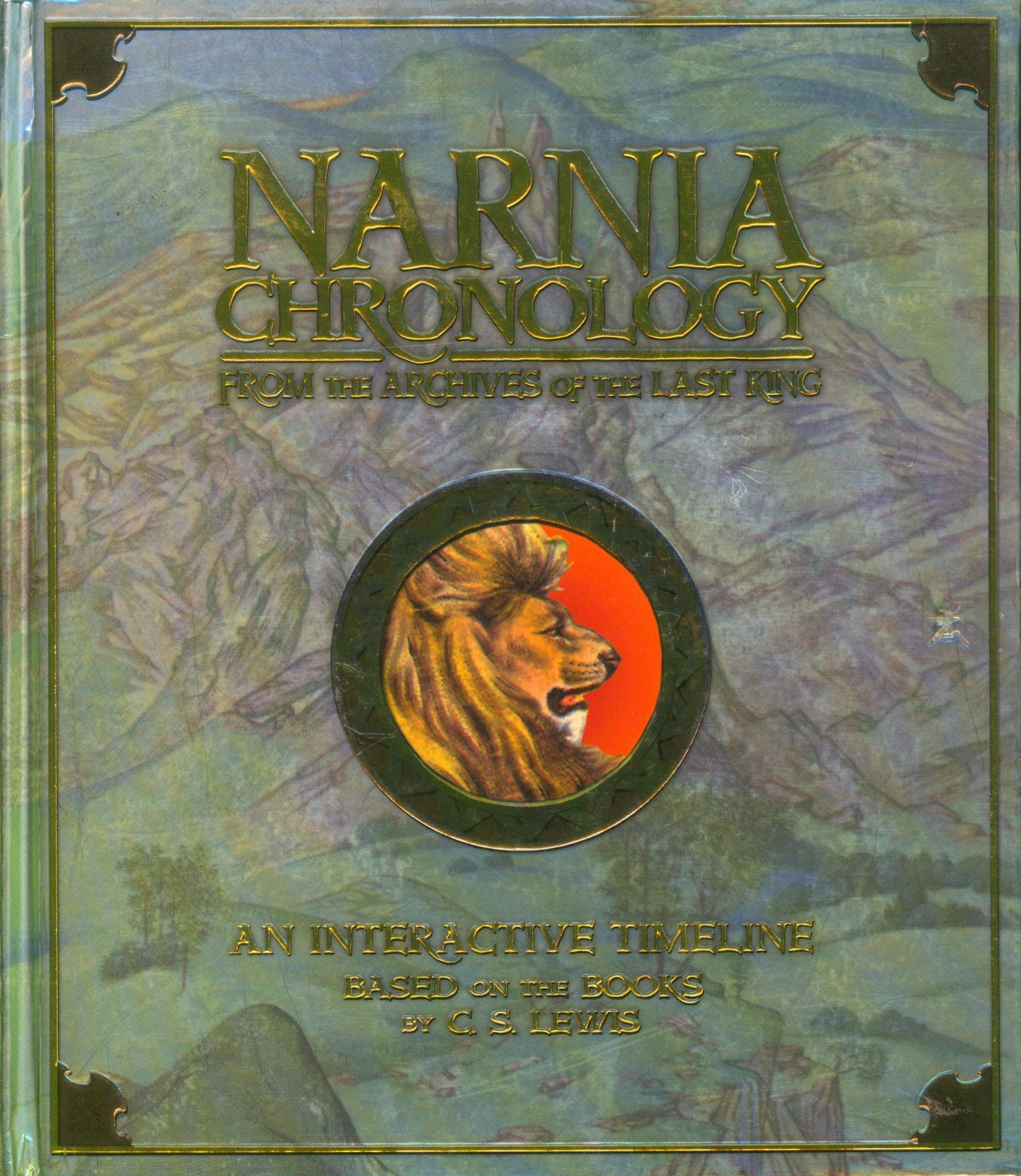Narnia Books in Order: A Comprehensive Guide

The Chronicles of Narnia, C.S. Lewis’s beloved fantasy series, has captivated readers for generations. The enduring appeal of this magical world stems from its compelling characters, thrilling adventures, and profound allegorical themes. However, the question of the “right” reading order often arises, sparking debate among fans. This comprehensive guide will explore the various ordering possibilities—publication order, chronological order, and the order in which Lewis wrote the books—providing context and arguments for each, allowing you to decide which approach best suits your reading experience. We will also delve into the rich tapestry of the Narnia books, exploring their genres, literary influence, and cultural impact.
Understanding the Different Ordering Approaches

There’s no single definitive answer to the question of how to read the Narnia books. The lack of a prescribed order from Lewis himself allows for various approaches, each offering a unique reading journey:
1. Publication Order: The Original Narnia Experience
This order mirrors the initial release of the books, providing a chronological flow as they were presented to readers at the time. The order is as follows:
- The Lion, the Witch, and the Wardrobe (1950)
- Prince Caspian (1951)
- The Voyage of the Dawn Treader (1952)
- The Silver Chair (1953)
- The Horse and His Boy (1954)
- The Magician’s Nephew (1955)
- The Last Battle (1956)

Arguments for Publication Order:
- Organic Narrative: This order allows for a natural unfolding of the Narnia story. Each book builds upon the preceding one, creating a sense of ongoing discovery and revelation.
- Introduction to Aslan: The Lion, the Witch, and the Wardrobe introduces Aslan in a way that perfectly captures the mystery and wonder surrounding him. Reading The Magician’s Nephew first would rob this initial encounter of its impact.
- Historical Context: Experiencing the books as Lewis’s original audience did provides a valuable historical perspective on their reception and impact.
2. Chronological Order: A Story of Creation
This ordering presents the books based on their internal chronology, arranging them according to the events within Narnia’s timeline. This is the order favored by HarperCollins and the C.S. Lewis Estate:
- The Magician’s Nephew
- The Lion, the Witch, and the Wardrobe
- The Horse and His Boy
- Prince Caspian
- The Voyage of the Dawn Treader
- The Silver Chair
- The Last Battle
Arguments for Chronological Order:
- Sequential Storytelling: This order provides a linear narrative, offering a clear understanding of Narnia’s creation and its subsequent history.
- Character Development: Following the timeline allows for a deeper appreciation of character development, showcasing the growth and evolution of key figures across different stories.
- World-Building: The chronological sequence aids in understanding the broader world of Narnia, revealing the cause-and-effect relationships between various events and their consequences.
3. Order of Writing: Lewis’s Creative Process
This approach orders the books based on the year of completion by C.S. Lewis, offering insights into his creative process. This order is as follows:
- The Lion, the Witch, and the Wardrobe (Completed March 1949)
- Prince Caspian (Completed December 1949)
- The Voyage of the Dawn Treader (Written January-February 1950)
- The Horse and His Boy (Completed July 1950)
- The Silver Chair (Completed March 1951)
- The Last Battle (Completed March 1953)
- The Magician’s Nephew (Completed February 1954)
Arguments for Order of Writing:

- Evolution of Style: Observing the order of writing highlights the evolution of Lewis’s writing style and thematic concerns.
- Creative Development: This sequencing allows for a greater understanding of Lewis’s creative process and the way his ideas developed over time.
- Intentional Breaks: The order might reveal the reasons for breaks in the Narnia timeline, showing how Lewis revisited and expanded on certain characters and concepts.
The Debate: Publication vs. Chronology
The most significant debate revolves around publication order versus chronological order. While HarperCollins suggests Lewis preferred a chronological approach, the evidence remains somewhat inconclusive. Lewis’s letter to Laurence Krieg indicates a flexible attitude toward the order, emphasizing the importance of reading the books rather than adhering strictly to a sequence.
Many scholars and ardent Narnia fans favour the publication order. This is not merely sentimental attachment to the original experience; it is rooted in the belief that the publication order offers the most compelling and engaging narrative arc. The Lion, the Witch, and the Wardrobe serves as an ideal introduction to Narnia, creating a sense of mystery and wonder that is vital for a first-time reader. The Magician’s Nephew, while a superb prequel, might be more rewarding when read after the reader has developed an understanding of Narnia’s core elements and Aslan’s role.
Thematic Exploration of the Chronicles of Narnia
The Chronicles of Narnia transcend simple children’s literature; they are rich in allegorical meaning, exploring complex themes suitable for all ages. The books grapple with concepts like:
- Good vs. Evil: The central conflict in each story involves a struggle against an encroaching evil, with the forces of good ultimately prevailing. This recurring motif emphasizes the importance of morality and the fight for justice.
- Faith and Belief: The presence of Aslan, a Christ-like figure, introduces questions of faith, sacrifice, and redemption. The characters’ journeys of faith mirror the spiritual quest of readers.
- Redemption and Forgiveness: The capacity for redemption and forgiveness is a central theme, demonstrating that even those who have done wrong can find forgiveness and a new path towards goodness.
- Sacrifice and Courage: The characters demonstrate profound courage in the face of adversity, often involving self-sacrifice for the greater good. These instances highlight the importance of resilience and selfless acts.
- Friendship and Loyalty: Throughout the series, loyalty and friendship are emphasized, illustrating the power of strong bonds to withstand challenges.
The Cultural Impact of Narnia
The Chronicles of Narnia have left an indelible mark on literature and popular culture. The books:
- Literary Influence: The series has inspired countless other works of fantasy literature, influencing authors and their creation of magical worlds, compelling characters, and allegorical narratives.
- Adaptations: The books have been adapted into various formats—movies, television series, stage productions—further broadening their reach and impact on a global audience.
- Awards and Recognition: The series has received numerous accolades and awards, solidifying its position as a classic of children’s literature, with the enduring appreciation among readers and scholars alike.
- Communities and Fandom: The passion surrounding the Chronicles of Narnia has fostered thriving communities and fan bases, with extensive discussions on the stories, characters, and themes. These groups share their interpretations and enrich their understanding through collective engagement.
Conclusion: Choosing Your Narnia Journey
Ultimately, the “best” reading order depends entirely on personal preference. While the publication order provides an immediate immersion into the enchanting world of Narnia, the chronological order offers a meticulous exploration of its history. The order in which Lewis wrote the books provides a fascinating insight into his creative process. This guide empowers you to explore these various paths and choose the approach that best aligns with your individual reading preferences and expectations. Regardless of the order you choose, prepare to be transported to a world of magic, adventure, and timeless wisdom.